Made in Abyss: Binary Star Falling into Darkness Review
You are going into Made in Abyss: Binary Star Falling into Darkness either as someone who is familiar with Made in Abyss, or someone who is not - and wherever you fall will largely affect what you get out of this game.
This is perhaps an obvious thing to say, but it is such a critical factor regarding Binary Star Falling into Darkness; it is a game primarily made for Made in Abyss fans with very little to offer for newcomers. Binary Star Falling into Darkness should not be treated as a gateway to get into Made in Abyss - either read the manga or watch the anime series. Instead, this game is a flawed, but interesting concoction of how Made in Abyss’s unique world and “rules” can be implemented into the framework of a video game, for better and for worse.
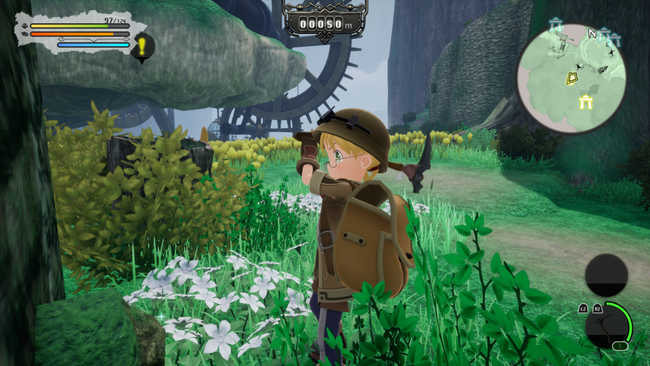
I am coming into Binary Star Falling into Darkness as someone who deeply adores the anime series. Made in Abyss is a fascinating, disturbing, enchanting piece of work that defies expectations in a warped way. It revolves around a young girl named Riko as she searches for her mom at the bottom of a dangerous chasm known as the Abyss. She is accompanied by Reg, a mysterious amnesiac robot boy. Descending the Abyss gets progressively more dangerous as reaching new layers introduces more deadly geographical layouts and wildlife. Most importantly, ascending at any time in the Abyss inflicts a nasty curse on people. I’ll elaborate more on that a bit later.
Binary Star Falling into Darkness deceptively offers players two modes when beginning the game; one that follows the anime source material with Riko and Reg, while the other has people design their own original character and follow a new original story. Players cannot begin the latter until they finish Riko’s adventure first though.
The Hello Abyss mode with Riko and Reg is basically a short tutorial in disguise. It lasts under three hours and abruptly ends after Riko and Reg leave Ozen to descend into the 3rd Layer. For those that have watched the anime, it goes up to episode 8 in the first season. Hello Abyss is also a poor representation of what the real game experience is like.
In Binary Star Falling into Darkness, players venture into the Abyss to obtain relics, complete quests, and find a way back up to the surface safely. The Abyss in Binary Star Falling into Darkness goes down to the 5th Layer, and each layer is divided up into around 10-15 zones with distinct map layouts. Venturing between zones consumes health and/or hunger. There is a heavy emphasis on verticality in Binary Star Falling into Darkness’s environments, so players will constantly be climbing and setting down ropes.
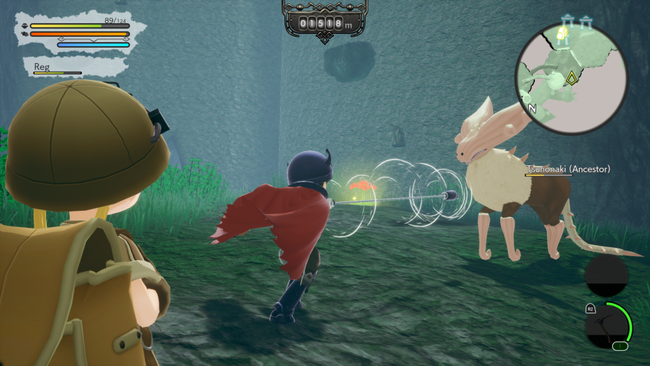
The Hello Abyss story mode eases on many of the survival elements that are core to the Binary Star Falling into Darkness experience. Riko doesn’t need to craft ropes because Reg can do it for free with his detachable arm; she comes with some early upgrades that makes traversal faster and easier as well. Plus, there is no durability loss on any of Riko’s tools, so she can swing her weapons freely without worrying about them breaking. If that wasn’t enough, Reg is always at Riko’s side once he joins and does most of the heavy lifting in combat encounters for Riko.
If anything, Hello Abyss is a mere introduction to the game’s interface. It gave me a bad first impression and thankfully, it was not representative of what Binary Star Falling into Darkness actually is. The story beats in Hello Abyss are faithful to the source material, though its visual execution is lackluster. Once again, you should not treat Hello Abyss as the gateway to get into Made in Abyss; other avenues provide a much, much better way to experience it.
Ok, so what is the “real” Binary Star Falling into Darkness experience then?

The lion’s share of it is in the other mode, Deep in Abyss. It is a completely new, original Made in Abyss story that has players take on the role of a silent protagonist they create. The original character is a young traveler that moves to the town of Orth with the hope of becoming a Cave Raider that reaches the depths of the Abyss and thus, achieving the prestigious White Whistle rank. Cave Raiders progress through the whistle ranks of red, blue, moon, black, and white; each progressive rank allows clearance to a deeper layer in the Abyss. The deeper you are in the Abyss, the more higher value relics you’ll come across, which in turn nets more money in exchange for the greater danger.
Deep in Abyss is where the game truly unfolds properly. It is primarily a survival game with several RPG elements that somewhat stays true to the Made in Abyss identity - both to its strength and its detriment.
Much of Deep in Abyss’s early hours are revisiting the same zones that Riko and Reg visited in Hello Abyss. This time, though, players will be pushed to actually scavenge for resources, craft tools, and cook food to replenish their health and hunger. Whether it’s fighting off monsters with a pickaxe, firing arrows with a bow, or fishing at a pond for ingredients, things will eventually break as players use them continuously. They can either head back to the surface before those tools break to replenish their durability or simply craft a new one if they have the proper materials on-hand.
Binary Star Falling into Darkness’s skill tree is unlocked in Deep in Abyss too. Players level up through completing quests and appraising relics they’ve successfully brought back to the surface after a dive run. Leveling up awards a skill point that can be invested into several things, such as extending how many hits they can execute with a weapon’s attack string, expanding the weight limit of their backpack so they can carry more things, learning new recipes to cook, climbing faster with less stamina consumption, and so on. Advancing the skill tree further is often blocked until people reach a higher whistle rank.
Perhaps the most distinguishing feature in Binary Star Falling into Darkness is one of the major elements in Made in Abyss’s world - the Curse of the Abyss.
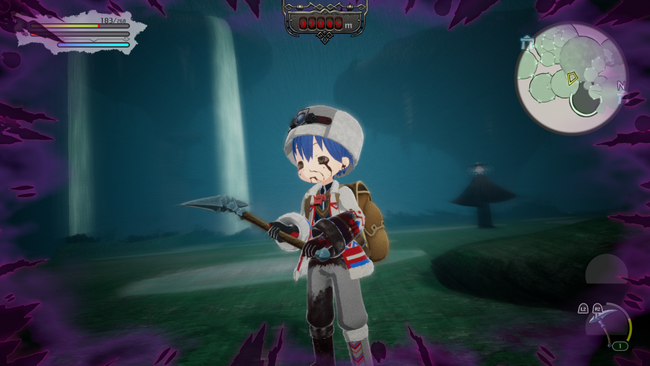
In Made in Abyss, one of the scariest things to consider when descending the Abyss is what happens when you begin to move back up - whether it’s climbing up a wall, walking up a slope, or even going up a staircase. In early layers, people will suffer decompression illness through nausea, headaches, vomiting, numbness, and so forth. Moving up in later layers becomes a severe hazard as the curse can incur hallucinations, bleeding throughout the body, loss of senses, and even death.
This Curse of the Abyss has a significant effect in Binary Star Falling into Darkness; it is what makes this game different from any other survival game. Any time a player is moving upward in the Abyss, even for a few seconds, the curse gradually creeps up on them as it imbues the borders of the screen with a menacing dark purple aura. The numbers on the depth meter at the top center of the screen gradually becomes a deeper, darker crimson to warn players that the curse’s effects are about to strike.
Early on in the 1st and 2nd Layers of the Abyss, the curse will cause characters to vomit and drain a good chunk of their hunger and stamina meters; later layers will give them hallucinations, disorient them through messing with the player’s controls, and leave them practically at the brink of death. Even the “mild” consequences of the curse can be severe at the wrong place and time. As the character’s hunger meter depletes, their stamina replenishes at a slower rate. Once the hunger meter is fully empty, stamina will no longer refill and players won’t even have the strength to swing their weapon. Plus, Binary Star Falling into Darkness will not allow people to travel between zones if they don’t meet the health and hunger requirements to travel to them.
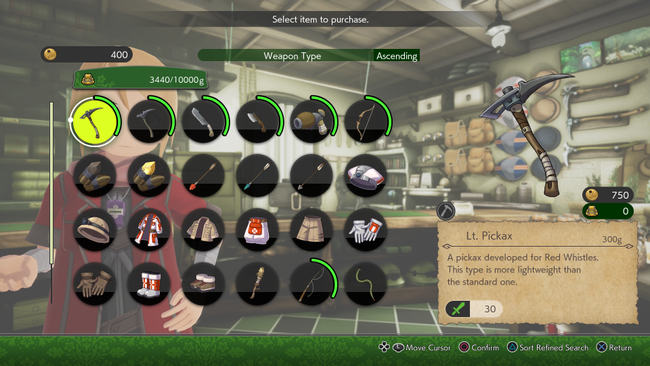
It is not hard to find yourself in a life-or-death situation in this game. Due to the curse, descending is far easier than climbing back up to escape the Abyss. The backpack has a weight limitation, so there is usually no feasible way to have enough resources for both the dive and return trip from the get-go; people will have to hunt for resources to cook meals and ensure they don’t fully exhaust themselves on the return trip.
Sometimes story triggers will warp them back to the surface immediately for free, but it becomes less frequent the further the story is in the deeper layers. Although people can eventually warp down to deeper layers in their dive, Binary Star Falling into Darkness places the onus on people to get back up themselves. This means finding a fast and efficient route to the previous “completed” layer and fast traveling up to the surface at a severe health and stamina cost if a story event doesn’t teleport them back for free.
This is where it gets tricky in assessing Binary Star Falling into Darkness. I think fast traveling to the beginning of the 1st Layer from completed layers betrays the essence of the Made in Abyss source material in Binary Star Falling into Darkness, since it makes ascending and escaping the Abyss way less of a pain once you realize this. I spent many hours embarking on return trips manually on foot, carefully planning quick and efficient routes to ascend previous layers back to the surface before learning that’s how fast travel worked.
By all accounts, this is not a “fun” thing to do in a video game yet it is very much in the spirit of Made in Abyss. Oddly enough, I think making the return trip a forced tedious, arduous process would’ve been something that I, as a Made in Abyss fan, would appreciate more, though I imagine outsiders who share little or no reverence to it would understandably find it a chore to deal with. I know it sounds weird to say that escaping the Abyss in Binary Star Falling into Darkness manually on foot every single time was a better experience, but it enhanced the game’s survival element when I was ignorant of how the fast travel system functioned.
Binary Star Falling into Darkness makes further compromises beyond this. Mail balloons are items players can craft or buy to save their game data when inside the Abyss, but the game autosaves every time the player enters a zone too so the penalty for dying isn’t all that severe. The curse is something that people will wrestle with often for sure, though avoiding it at its worst is relatively simple. If anything, the most difficult part of Binary Star Falling into Darkness lies in resource management and balancing how much should get done in a dive run before calling it quits to embark on the return trip back. Once players reach the post-game, they can freely fast travel up and down between layers.

Of course, the elephant in the room is well… Binary Star Falling into Darkness’s visuals. This is not a good looking game by modern game standards. Its 3D character models are comparable to something seen on consoles multiple generations ago. Some of the environments and enemy designs do have a strong art direction to them, but that’s primarily because of the strength of how the manga and anime have portrayed them previously. The animation work does Binary Star Falling into Darkness’s visuals no favors though - it is stiff and relatively primitive to other modern games.
On the other hand, Binary Star Falling into Darkness mostly captures the atmosphere of the world of Made in Abyss in a weirdly compelling way. The sound design smartly puts emphasis on noises from the surrounding environment. It nails the feeling of being in a bleak, desolate, foreign world alone filled with hostile creatures. There is really nothing to help players besides their wit, their understanding of the game’s systems, and how well they can traverse maps.
It is worth mentioning that, much like the Made in Abyss source material, Binary Star Falling into Darkness has its fair share of violent, gruesome deaths. Even falling off a ledge from too high will greet players with a gruesome scene of Riko and/or their original character lying dead on the ground with empty eyes and blood everywhere. Dying to specific monsters or failing quicktime events will have unique death animations that are usually very gruesome and gory. One infamous creature from Made in Abyss feeds on the innards of a human and mimics their pleas of help to lure in its next prey, and that is fully displayed in Binary Star Falling into Darkness. If you are sensitive to scenes like these, just be aware that this game is full of them - which is faithfully following the core tenets of what defines Made in Abyss.
Aside from that, there are other technical issues in Binary Star Falling into Darkness. Some minor text overflow issues are present with some dialogue going beyond the dialogue box. There were a few instances when accessing my storage chest soft-locked the game; thankfully, I didn’t lose much progress in those cases. A poorly translated skill description in the skill tree masks one of the most useful skills in the game; it reads that it “speeds up gathering time” from resource nodes when in actuality, the skill doubles the amount of resources you gain from those resource nodes - which is borderline game-changing.
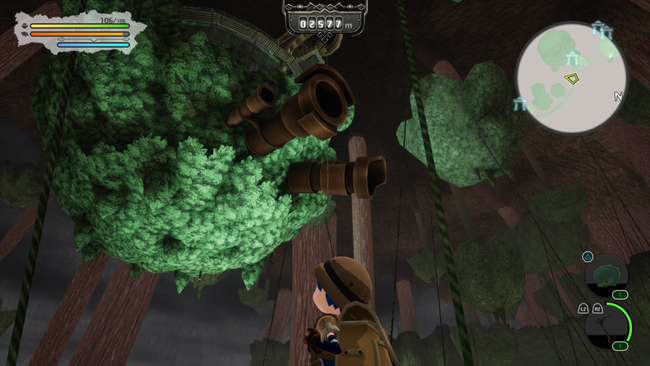
I tend to not address a game’s asking price when I evaluate them, because ultimately, a game’s beauty and value is in the eye of the beholder; this will be the rare exception where it is hard for me to recommend this game at its full $60 asking price.
If you are hoping to play as Riko and Reg in Binary Star Falling into Darkness, it is a very brief experience; they do not even get to meet Nanachi in the game in this mode. With Deep in Abyss, the original protagonist does encounter Riko, Reg, and Nanachi momentarily; they also eventually get to meet Bondrewd, who gives the worst mandatory fetch quest ever. Binary Star Falling into Darkness side-steps the entire plot of Made in Abyss’s 3rd movie, Dawn of a Deep Soul, which serves as a direct sequel to its first season. The original story for Deep in Abyss introduces a few new characters as well, though its core story is pretty thin and those familiar with Made in Abyss will find it predictable. Reaching credits in Deep in Abyss will roughly take 20 hours, though this can greatly vary on how thorough a player is in exploring every nook and cranny of the Abyss to complete every side quest at their own pace comfortably..
Made in Abyss: Binary Star Falling into Darkness is certainly not a game for everyone. It is a challenging balancing act between being faithful to Made in Abyss and being a “fun” video game. It does an admirable job in implementing the “systems” and “rules” of Made in Abyss’s world into a game, but the overall result just feels underwhelming in its presentation and execution. Fans of Made in Abyss will enjoy Binary Star Falling into Darkness if they are seeking the hardcore survival aspect of being a Cave Raider in that world, but it has little to offer for complete newcomers.